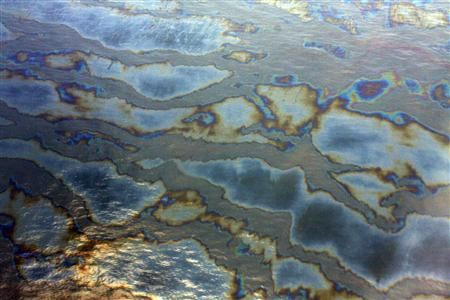Clean Water Science: This New Material Can Absorb Oil Spills, And Be Reused Over And Over

The way we respond to oil spills may have just changed for good. A new material created by Seth Darling and other researchers at the U.S. Department of Energy's Argonne National Laboratory can absorb up to 90 times its weight in oil, and it can be reused.
The Deep Water Horizon spill revealed a problem that only became apparent due to the enormous scale of the spill; some of the oil stayed below the water, making it impossible to remove from the surface of the water or to burn it off. So scientists started working on a new way to collect that oil.
A material called Oleo Sponge integrates regular everyday foam, like what's in your car seats and desk chair seats, with a thin layer of metal oxides. Those metal oxides act as a glue for molecules that attract oil on one side and hold on to the metal oxides on the other side, according to the Argonne National Laboratory.
Multiple tests in a large tank showed that the Oleo Sponge works, both on the surface of the water and below it, collecting crude oil and diesel. Plus, even after hundred of tests in which the sponge was used to soak up oil and was then wrung out, the sponge never broke down, said Darling.
The material lends itself to cleaning up other messes as well. It's adaptable; "you could attach a different molecule to grab any specific substance you need," said Jeff Elam, another researcher who worked helped develop the metal oxides that bind to the foam.
In addition to reusing the sponge, the oil it recovers can also be reused, a far better alternative to burning it.
© Copyright IBTimes 2025. All rights reserved.




















